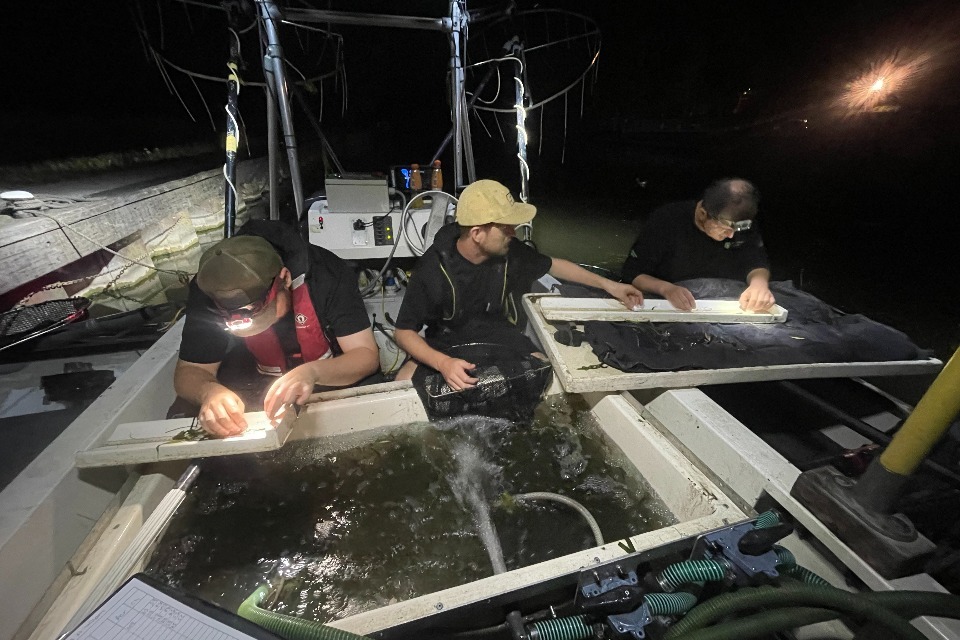- Annual monitoring gives state of play on fish in the Thames
- More than 6,000 fish checked in 2024
- Fish still healthy in the Thames despite dry weather
The Environment Agency is using a unique boom boat for important electric fish monitoring surveys along the River Thames between Iffley Lock and the tidal limit at Teddington Lock.
Every year, night surveys are carried out in July to give an indication of the health of the local fish population. Data is collected on length and scales that cumulatively builds into a picture of the annual growth rate.
Electric fishing works by creating an electric field in the water to attract and immobilise the fish. The ‘Thames Trout’ boom boat has the largest front mounted underwater electrodes in the fleet that cover a considerable surface of the river allowing officers to carry out their survey work quickly and simply.
Thames Trout boom boat with electrodes raised
The electrodes stimulate a fish’s nervous system so that it swims towards the operator or is unable to swim away and can be easily caught in a net. They are then moved to aerated holding tanks where they quickly recover from the effects of the field before being identified, measured and returned to the water.
Environment Agency team leader Jonathan Baxter said
We undertake annual fish-monitoring on the Thames and its tributaries. We have a statutory duty to maintain, improve and develop fisheries, and the Thames Trout makes what could be a tricky process an absolute doddle.
Surveys such as these provide extremely accurate data from our principal fisheries and can detect trends linked to factors such as climate change.
The Environment Agency tends to begin these surveys at dusk when the waterway is quieter, allowing it to perform its work without interruption by other river users. The night also tends to produce better results as the fish rise in the water so they can be more easily caught.
Jonathan Baxter added
More than 6,200 fish were caught in the 2024 survey between Iffley and Benson with results showing an abundance of healthy fish.
We’ve surveyed more than 10,000 this year and despite the recent dry weather, we have seen no significant impact to the Thames fish population, although as with any dry weather event, anglers should be mindful of the fish they are catching as some species may need a longer recovery period in extreme heat.

Healthy sea trout returning to spawn in the autumn
The fish populations on the Thames give a great opportunity to people of all ages to get out and enjoy fishing in one of our country’s largest rivers.
Anyone aged 13 or over needs a licence to fish for salmon, trout, eels or freshwater species. Information on when you need a licence and to buy one are at https//www.gov.uk/fishing-licences/buy-a-fishing-licence. They can also be purchased by phone 0344 800 5386. Concessions are available.
The income from rod licences helps with the sustainable management of fisheries. Our fisheries enforcement officers check private lakes, rivers, ponds and canals for illegal fishing, supported by clubs, the Angling Trust and police.
Media enquiries 0800 141 2743
E-mail communications_se@environment-agency.gov.uk
Background
The public can access fish data at EA Ecology & Fish Data Explorer

